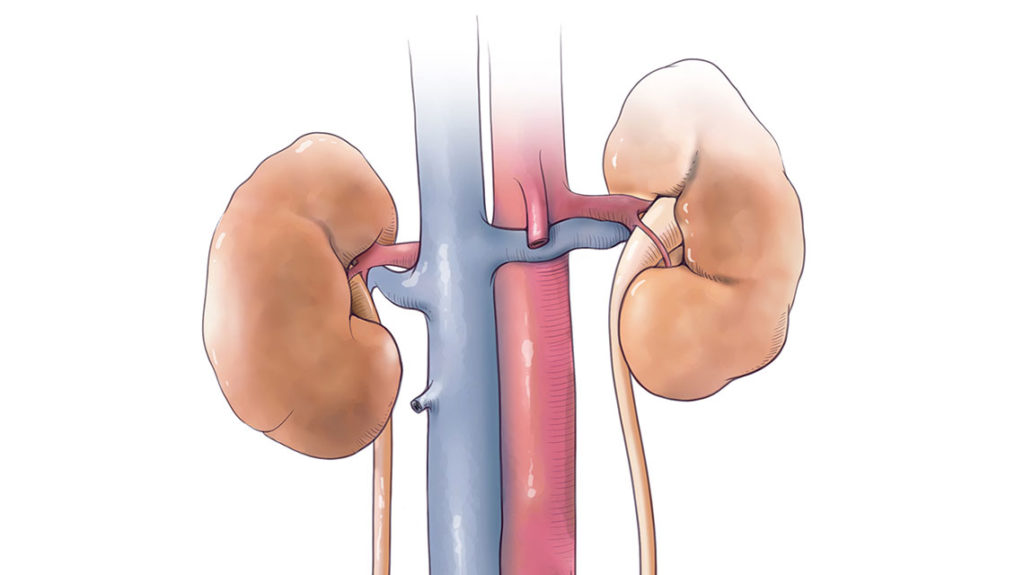Novel Compound Shows Promise for Treating Nephrotic Syndrome
Novel Compound Shows Promise for Treating Nephrotic Syndrome https://pediatricsnationwide.org/wp-content/uploads/2021/01/Urinary-system-No-Background-kidney-header-1024x575.jpg 1024 575 Mary Bates, PhD Mary Bates, PhD https://secure.gravatar.com/avatar/c6233ca2b7754ab7c4c820e14eb518c8?s=96&d=mm&r=g- May 10, 2022
- Mary Bates, PhD

PPARγ selective modulator appear to be more efficacious in reducing proteinuria and comorbidities, and has fewer side effects than a traditional PPARγ agonist in a preclinical model of nephrotic syndrome.
Nephrotic syndrome, characterized by high proteinuria, is one of the most common forms of glomerular disease. It is typically associated with edema, hypercholesterolemia, hypoalbuminemia, systemic immune dysregulation and hypercoagulopathy. Standard treatments for nephrotic syndrome include glucocorticoids, but their use leads to side effects and many patients are resistant to treatment.
Researchers at Nationwide Children’s and others have previously reported that peroxisome proliferator-activated receptor gamma (PPARγ) agonists, such as the thiazolidinediones, not only provide protective effects in type II diabetes and diabetic nephropathy, but also in various models of glomerular disease. Thiazolidinediones are widely marketed anti-diabetic drugs, but the last decade has seen them come under scrutiny because of significant side effects, including adipogenic weight gain.
More recently, selective modulators of PPARγ have emerged as a potential alternative to PPARγ agonists. GQ-16 is one of these novel selective modulators of PPARγ. It has been shown to improve insulin sensitivity in diabetic mice without associated weight gain and edema.
In a new study, researchers from Nationwide Children’s compared the therapeutic benefits and side effects of GQ-16 with a traditional thiazolidinedione (pioglitazone) in a rat model of nephrotic syndrome.

Shipra Agrawal, PhD
“Our goal is to find new therapies that are more efficacious in reducing proteinuria in nephrotic syndrome and have fewer side effects,” says Shipra Agrawal, PhD, a principal investigator in the Center for Clinical and Translational Research at the Abigail Wexner Research Institute at Nationwide Children’s and the senior author of the study.
Dr. Agrawal and her colleagues found that while both pioglitazone and GQ-16 reduced proteinuria in the rats, GQ-16 was more effective. GQ-16 also reduced associated comorbidities of nephrotic syndrome, including hypercoagulopathy, hypercholesterolemia and hypoalbuminemia. When the researchers analyzed fat tissue from the rats, they observed that pioglitazone induced more markers of adipogenesis than GQ-16. Further analyses showed that GQ-16 induced insulin-sensitizing genes called adipokines more than pioglitazone.
Finally, Dr. Agrawal and her team performed RNA sequencing on the filtering units of the rats’ kidneys. They found both common and distinct glomerular gene expression pathways activated by pioglitazone and GQ-16.
Overall, the researchers conclude that selective modulation of PPARγ by GQ-16 is effective in reducing proteinuria as well as comorbidities associated with nephrotic syndrome, while also providing reduced potential for adipogenesis.
“We are showing that we can move away from these traditional agonists of PPARγ and go toward these selective modulators like GQ-16,” says Dr. Agrawal, who is also an assistant professor of pediatrics at The Ohio State University College of Medicine. “Going forward, we can optimize these selective modulators in such a way that we see an even higher potential of reducing proteinuria and comorbidities with fewer side effects. It would be great to see this compound go to clinical trial one day.”
Reference:
Bryant C, Rask G, Waller AP, Webb A, Galdino-Pitta MR, Amato AA, Cianciolo R, Govindarajan R, Becknell B, Kerlin BA, Neves FAR, Fornoni A, Agrawal S. Selective modulator of nuclear receptor PPARγ with reduced adipogenic potential ameliorates experimental nephrotic syndrome. iScience. 2022 Feb 28;25(4):104001. doi: 10.1016/j.isci.2022.104001.
Image credits: Nationwide Children’s
About the author
Mary a freelance science writer and blogger based in Boston. Her favorite topics include biology, psychology, neuroscience, ecology, and animal behavior. She has a BA in Biology-Psychology with a minor in English from Skidmore College in Saratoga Springs, NY, and a PhD from Brown University, where she researched bat echolocation and bullfrog chorusing.
-
Mary Bates, PhDhttps://pediatricsnationwide.org/author/mary-bates-phd/December 27, 2016
-
Mary Bates, PhDhttps://pediatricsnationwide.org/author/mary-bates-phd/
-
Mary Bates, PhDhttps://pediatricsnationwide.org/author/mary-bates-phd/
-
Mary Bates, PhDhttps://pediatricsnationwide.org/author/mary-bates-phd/






